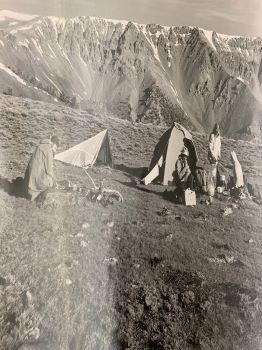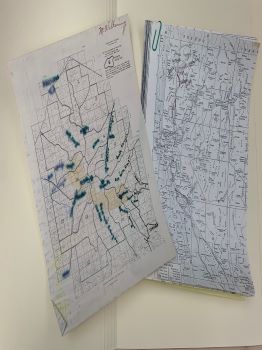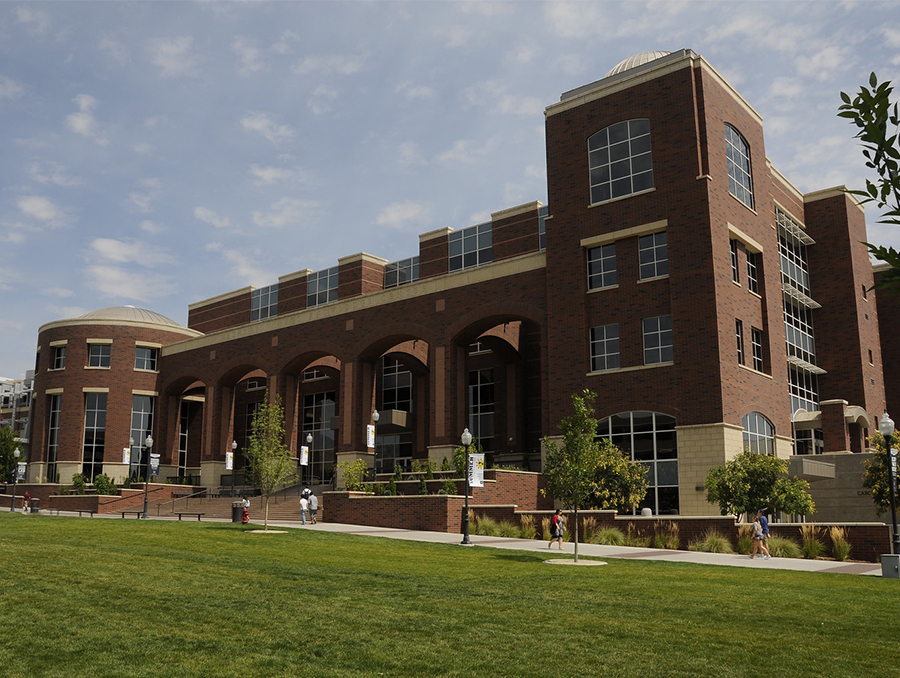When I was in eighth grade, I was startled to learn that my goofy US history teacher, prone to explaining the intricacies of the American Revolution with hand puppets (General Cornwallis will always be Mr. Bunny to me), had spent time as a Buddhist monk. Then again, how much do we usually know about our teachers outside of class?
Students at the University of Nevada, Reno in the 1960s and 1970s may have been only marginally aware of the prominence of physics professor Richard C. Sill outside his fields of academic specialty. Dr. Sill was an active member and leader within the Sierra Club at the local and national levels during an era of particular turmoil and activity within the environmental organization as it continued evolving from John Muir’s Sierra Club of outings and wilderness appreciation into an active political body that lobbied for environmental protections in the halls of government.

Richard C. Sill moved to Reno in 1959 with his wife, Marjorie Sill, to take up a position in the physics department at the University of Nevada, Reno. The Sills were already interested in environmental issues and enjoyed spending their downtime taking hikes and road trips to wild places in the regions in which they lived, as evidenced by the thousands of photographs and slides of their outdoor adventures. They joined the Toiyabe Chapter of the Sierra Club soon after arriving in town, and both spent the rest of their lives fighting for the protection of the wilderness in the Great Basin and the Eastern Sierra Nevada.

It’s clear from Richard Sill’s papers, now available for research use in Special Collections and University Archives, that he was one to jump in right away when he saw an issue or a group that interested him. In 1959, the Toiyabe Chapter was only three years old, and Dr. Sill quickly emerged as a leader of outings and conservation efforts. Within a decade, he was involved at the national level of the Club as a member of the Board of Directors. His time as a Director coincided with a period of intense internal turbulence within the Club’s leadership. No longer merely a California organization dedicated to hiking trips in the Sierra Nevada backcountry, the Sierra Club emerged as a national force, with chapters around the country and committees dedicated to political activity at every level. It is unsurprising that some factionalism developed within Club leadership alongside this fundamental change to the Club’s activities. In the early 1970s, the Board of Directors split into opposing camps, arguing over ethics, methods, and financial management. After months of nasty accusations and heated wrangling on all sides, Richard Sill publicly resigned from the Board in 1972. He never stopped fighting for the environment, but he no longer did so in an official Sierra Club capacity.
Richard Sill died in 1981 when the one-man plane he was piloting back to Reno from a conference in Utah missed the Stead runway and crashed nearby. He was 58 years old. Marjorie Sill, from whom he had gotten divorced in 1978, continued the environmental battle until her death in late 2016.
Special Collections and University Archives hold collections of papers from both of them, and Dr. Sill’s document a period in the national environmentalist movement that changed the message, the focus, and the approach from one of appreciation to one of conservation, reclamation, and legal protection. He worked on issues ranging from nuclear waste and the aftermath of bomb testing in the Nevada desert to forest management, from effective lobbying and testimonials to the proposed Walt Disney resort at Lake Tahoe. We owe the environmentalists of the 20th century a debt of gratitude, and we bear the responsibility to carry their legacy forward and continue the fight. And get to know your teachers. You never know
University Libraries
The University Libraries embrace intellectual inquiry and innovation, nurture the production of new knowledge, and foster excellence in learning, teaching and research. During each academic year, the Libraries welcomes more than 1.2 million visitors across its network of three libraries: the Mathewson-IGT Knowledge Center, the DeLaMare Science and Engineering Library and the Savitt Medical Library. Visitors checked-out more than 90,000 items and completed more than 2 million database searches.














